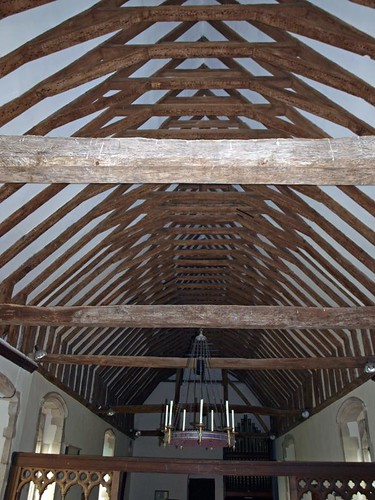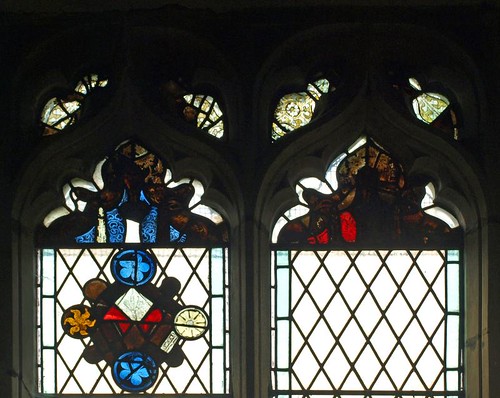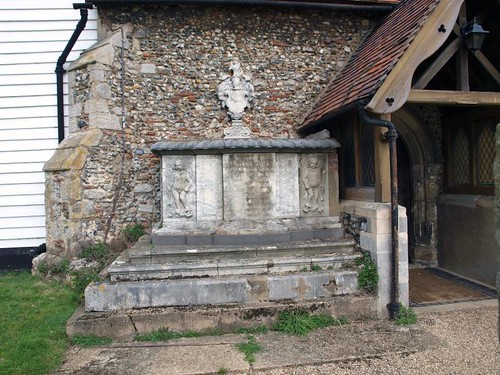ST MARY MAGDALEN. Nave with blocked Norman window in the N wall and two blocked circular windows in the W wall. W doorway with Roman brick dressings, chancel with remains of C14 looking windows. Most of them belong to the restoration of 1875. W tower of timber, weather-boarded. It is probably C16 and in any case replaces a small C15 one for which the tie-beams with queen-posts still survive in the W part of the nave. The tower has a centre with four posts carrying beams with queen-posts. The posts are cross-strutted. There are narrower N, S, and W aisles outside the square formed by the four posts. The tower aisles have pent-roofs, and above the bell-chamber is a pyramid roof. - FONT. Octagonal, Perp, with traceried stem and quatrefoils carrying shields. - SCREEN. Interesting because of its relatively early date, probably not later than c. 1350. On each side of the door six openings, separated by slender circular shafts with shaft-rings, and carrying an ogee arch. Circles with quatrefoils in the spandrels. Straight top. - HELM. C16, in the nave. - PLATE. Cup, small Paten, and large Flagon of 1665.
MAGDALEN LAVER. Far from the road stands the ancient church, looking across the trees and fields to a network of wireless masts on the far horizon. The farm is its only neighbour now, but here once stood a Roman house. The Norman builders of the church picked up the red bricks from the ruins and set them in the corners of the nave. In the 15th century a wooden tower was added to the church. Some of the beams are of prodigious size, and it is an elaborate affair, with a pent-roof halfway up and a pyramid over the bell-chamber. The door, decorated with tiny four-leaved flowers, has swung on its iron hinges about 500 years, and the heavily riveted door into the belfry has also been opening and shutting for centuries in its Norman archway. One of two fonts between these doors has rich 15th century carving. There is fine work by a 14th century woodcarver in the screen, which has cusped arches below a row of circles enclosing quatrefoils, linking beauty with boldness; it is a masterpiece.
Facing the midday sun on the outside wall is another carving in marble, the 200-year-old monument over the tomb of William Cole. It has cherubs with torches on each side, and an inscription recording that he was Sheriff of Essex and treasurer of St Thomas’s Hospital in London.
A tablet in the chancel reminds us that its remoteness did not save this place from the troubled days of the Civil War, for it tells us that George Kendleton was exiled during the Commonwealth.
Flickr.
Facing the midday sun on the outside wall is another carving in marble, the 200-year-old monument over the tomb of William Cole. It has cherubs with torches on each side, and an inscription recording that he was Sheriff of Essex and treasurer of St Thomas’s Hospital in London.
A tablet in the chancel reminds us that its remoteness did not save this place from the troubled days of the Civil War, for it tells us that George Kendleton was exiled during the Commonwealth.
Flickr.



No comments:
Post a Comment